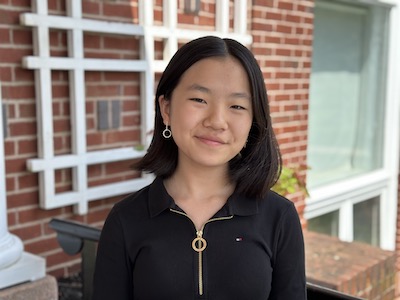 Leah Li ’26 was selected as one of the top ten winners of the New York Times Student STEM Writing Contest this year, and her essay exploring what glass frogs can tell us about human blood clotting was published by the Times last month.
Leah Li ’26 was selected as one of the top ten winners of the New York Times Student STEM Writing Contest this year, and her essay exploring what glass frogs can tell us about human blood clotting was published by the Times last month.
“I’ve always been interested in how nature gives us such a good handbook for dealing with problems, like how the design of bullet trains was inspired by birds because they’re so aerodynamic,” Leah said. “Nature tells us a lot about what we can do. In terms of the glass frogs, their ability to put all their red blood cells into their liver could give us some guidance on how we can prevent blood clots in humans.”
Leah, a boarding student from Texas who lives in Hallowell House, was one of more than 3,000 entrants in the contest. Competitors had to write about a stimulating discovery or topic that they found interesting and cite at least one source from the New York Times, Science News, or its sister site, Science News Explores.
In selecting her topic, Leah read through science articles she found fascinating and learned about glass frogs in Panama. The frog species, as Leah wrote, is “one of the few transparent terrestrial creatures.” As a result, the operation of its circulatory system was visible to scientists who studied the frogs during different activities. They found that while the frogs slept, almost 90 percent of their red blood cells traveled to the frogs’ livers, effectively allowing them to safely be translucent and better protected from predators.
This high concentration of red blood cells in the frogs’ tiny livers surprised the researchers, who questioned how it was possible without the frogs developing blood clots—and whether the discovery could have implications for the treatment of blood clots in humans, where they can be fatal. As Leah wrote, “Through targeted research on the frog’s ability to contain dense concentrations of red blood cells without clotting, researchers hope to replicate the natural success of this amphibian to save the lives of millions.”